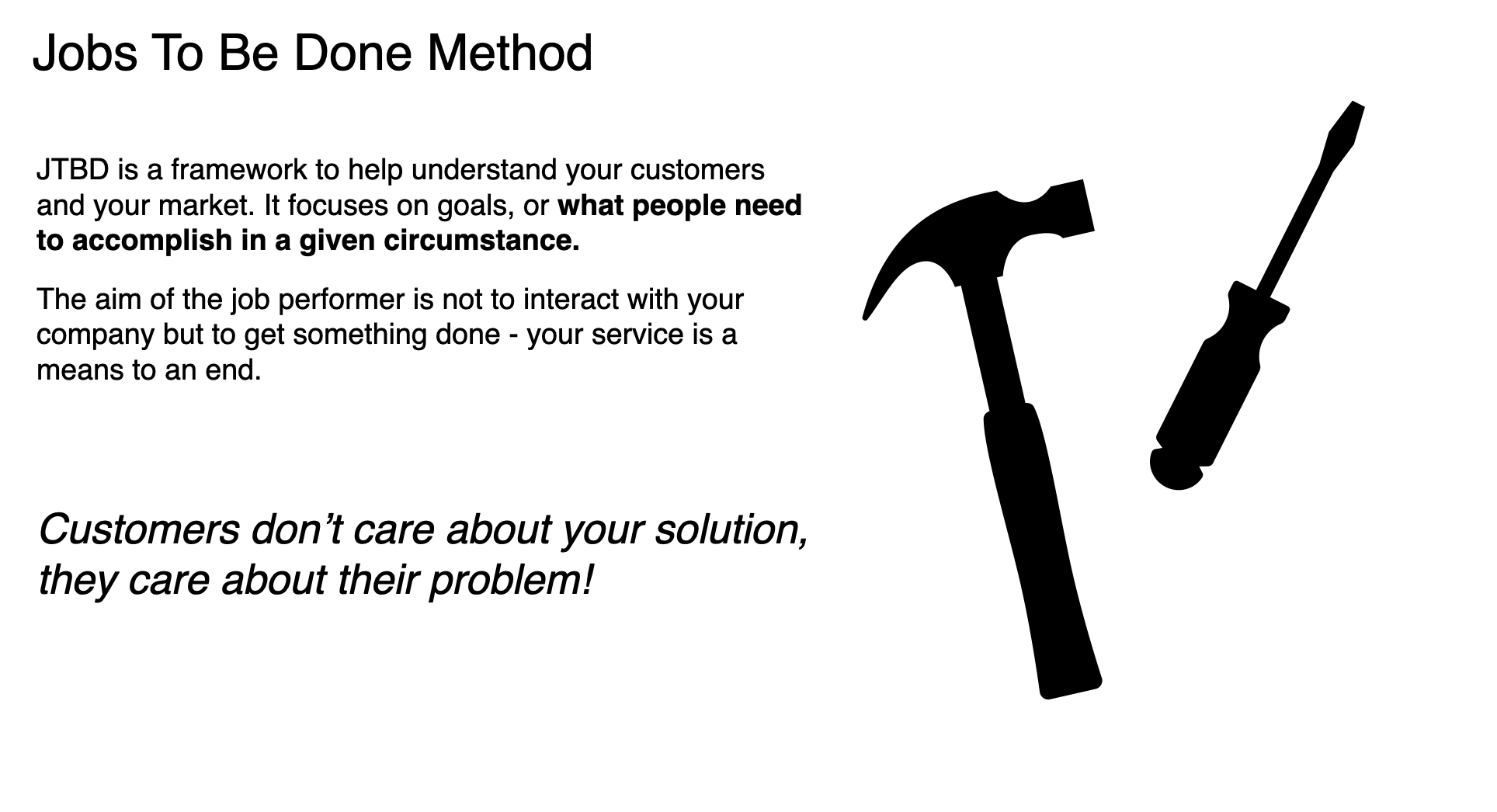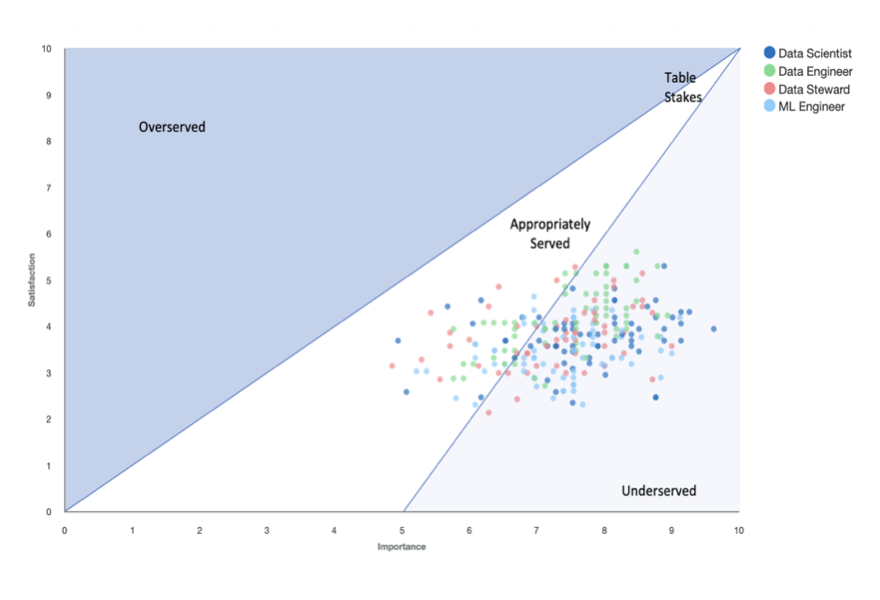Jobs to be Done + Outcome Driven Innovation
Our Goal: Understand the main jobs and job steps for key roles in the data and AI lifecycle (data engineer, data steward, data scientist, and machine learning engineer) as well as determine the top opportunities and table stakes.
My Role: Team lead for data steward squad and contributor the the Outcome-Driven Innovation (ODI) survey team
The Methods: Secondary research, stakeholder interviews, primary research, ODI survey
One of the presentation slides used to explain the method to stakeholders
Our Process:
4 main stages
1.Secondary Research
To begin to understand what is already known each squad searched through internal and external market analysis papers as well as previous internal research projects that featured the job roles we were targeting.
Through this work we compiled an initial set of draft job and outcome statements to later be validated through primary interviews.
2.Stakeholder Interviews
Next, to begin to engage stakeholders and spread the word and interest on this new project, each squad met with relevant stakeholders that would be able to speak to the targeted job roles.
My data steward squad met with 9 stakeholders across design, development, and product management. All had experience on products targeted at data stewards and thus subject matter experts on the role.
During the interviews we focused on:
their understanding of data steward goals, tasks, and typical collaborators
the solutions they see our product offering data stewards
what they would like to know about data stewards
any upcoming product roadmap plans relating to data steward tasks
what they think success would look like for the project
Once each team synthesized all that was heard from the stakeholders, we presented this back to the larger team noting our initial hypothesis on main job statements, as well as what areas of knowledge gaps will and would not be covered through this specific study.
3.Primary Jobs to Be Done (JTBD) Interviews
This was the fun part, speaking to actual target participants. With our understanding of typical tasks they focus on, we formed our screener for the target data steward role and began recruitment on external platforms as well as through existing user contacts.
After forming the discussion guide and making sure all participants had signed the necessary consent forms, we spoke to 14 qualified participants.
The interviews focused on:
their top organizational goals
their most recent experience achieving that goal with prompts into each stage of a Job map
i.e. Stage 1 - What steps do you take to locate and gather the needed inputs?
follow-up questions to understand their pain points, success metrics, and social needs
The synthesis of interviews was completed in Mural. Working through the main goals each participant identified we used the questions Why? and How? in order to get to the right level of abstraction for a main job.
Table from Jim Kalbach’s The Jobs to be Done Playbook
The main deliverable from this stage was one final main job, job map, and about 65 outcome statements.
Example job map created using the 8 universal job stages as a base.
4.Outcome-Driven Innovation (ODI) Survey
In order to make our findings more actionable, we decided to conduct a large scale ODI survey to uncover those outcome statements or needs that were most underserved for each role.
The survey asked participants to rank each outcome statement according to importance and current satisfaction (see image below). This would allow us to later plot each statement on a matrix to determine its overall opportunity.
Through an email marketing campaign along with targeted recruitment we analyzed 161 qualified participant responses, and plotted results for satisfaction and importance on a matrix (see image below)
These results were presented to stakeholders and follow-up workshops were held to determine next steps for the product roadmap.





